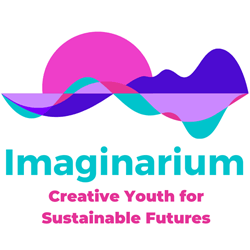Futures Studies, Futures Research, Futurism or Futurology are not attempting to see what the future will be, it’s about guiding decisions to reach the future that we desire.
The purpose of Futures Studies is to invent, value, and suggest possible and probable futures and to help people go through different options so that they can make decisions about what kind of future they want. In this way, it is possible to make effective plans to promote the realisation of the best possible future. (6; 3)
The time Horizon for the Future Studies is 5 – 20 years or 20 – 50 years depending on the situation.
There are following principles for the futures thinking (2; 1):
- The future is unpredictable. We can only form images and perceptions of the kind of events ahead of us – we are talking about several alternative futures.
- The future is not predetermined. We can consider what is likely to happen as we consider different possibilities.
- We can influence the future through our actions and choices.
Therefore, it is important to know what is possible, what is likely, and what is desirable. The importance of values and the value debate in considering future options is therefore inevitable. (7)
The future will be shaped by trends and megatrends, which we can see even today, more or less unexpected events and phenomena but also our visions, expectations and fears and also actions. These five affect each other (7):
- Trends and megatrends are developments in things and events that can be traced backwards.
- Events and wildcards (such as COVID-19) can be understood as anything that has an impact on our lives and the way things are done in one way or another.
- Weak signals (or early indicators, emerging issues) are emerging new things and phenomena with no history. Some of these new things can have a major impact on the nature of the future – they can change the direction of development.
- The future images are the visions, expectations and fears that people and society will associate with the future. Future images play a strong role in motivating or crippling choices and decision-making, and sometimes as self-fulfilling predictions.
- The actions are guided by the future images. The future is then realised as a result of various actions and activities. (See, e.g., 5 Dator 1996, 107-110)
In order to be an active influencer on the future, one has to be future-conscious:
- Conscious understanding of what kind of future is desirable and how it can be promoted.
- Understanding how our decisions affect reality and actively participating in the creative processes of the future in everyday life.
In order to understand the future and gain meaning in the things and events around us, it is important to understand the present and the past – why we have come to this reality and situation. (4)
Sources:
- Aalto, Hanna-Kaisa – Heikkilä, Katariina – Keski-Pukkila, Pasi – Mäki, Maija & Pöllänen, Markus (ed.) (2022) Tulevaisuudentutkimus tutuksi – Perusteita ja menetelmiä. Tulevaisuudentutkimuksen Verkostoakatemian julkaisuja 1/2022, Futures Reseach Centre, University of Turku, https://urn.fi/URN:ISBN:978-952-249-563-1.
- Amara, Roy (1981) The Futures Field. Searching for Definitions and Boundaries. The Futurist, Vol. XV, 25–29.
- Bell, W. 1996. The Sociology of the Future and the Future of Sociology. Sociological Perspectives.
- Bjerstedt, Å.1992. Conceptions of Future Threats and Developments: Psychological Starting Points and Educational Possibilities. Kirjassa U. Svedin and B. Aniasson (toim.): Society and the Environment, Kluwer Academic Publishers, Netherlands, 1992, ss. 229-255.
- Dator, J. 1996. Futures Studies as Applied Knowledge. In book Slaughter, R. (ed.). New Thinking for a New Millennium. Routledge, London & New York, ss. 103-115.
- Masini, E. 1993. Why Futures Studies? Grey Seal, London.
- Rubin, A. 2004. Tulevaisuudentutkimus tiedonalana. TOPI – Tulevaisuudentutkimuksen oppimateriaalit. Tulevaisuuden tutkimuskeskus, Turun yliopisto. https://tulevaisuus.fi/






